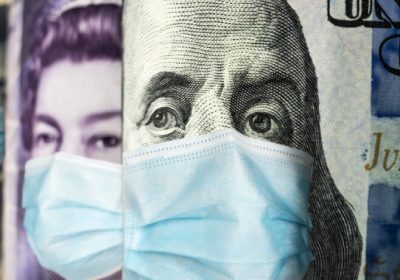
- Author: Stephen Koukoulas | Chief Economist
- Posted: July 27, 2020
Government Stimulus Continues Amid an Uncertain Outlook
By Stephen Koukoulas
The dominant issue for the economy remains the intensity of the COVID-19 pandemic and the extent to which business will be able to open up and remain open in the months ahead.
With that problematic backdrop, the Morrison government has, correctly, indicated that a number of the economic support measures in place will be extended beyond the end of September, albeit with modifications. It has also indicated that there will be additional support measures in the months ahead as it works to underpin economic activity in otherwise trying circumstances.
It’s all about a vaccine
Analysis of the economy is, and will remain, complicated by sudden changes in the incidence of COVID-19 cases. The recent outbreak in Victoria and increase in the incidence in NSW will, for example, limit the extent of the near term economic pick-up.
That said, other areas that appear to have COVID-19 well contained will be able to open up and will benefit economically. Within that, however, some sectors will remain under severe stress for many months – tourism and parts of the hospitality sector are noteworthy examples.
A tepid economic recovery
GDP is forecast to have fallen by around 7 per cent in the June quarter, the largest fall on record and the debate now is squarely on the trajectory of the economic recovery into 2021. In simple terms, as the economy opens up, economic activity will rise. That has been seen in some of the partial indicators – retail spending and new motor vehicle sales, for example.
Retail sales rose 2.4 per cent in June after a record rise of 16.9 per cent in May, as the economy partially opened. This followed a record fall of 17.7 per cent in April when the bulk of the lock down effects were most extreme.
It is a similarly volatile picture for new motor vehicle sales which showed June sales just 6.4 per cent down on the same month a year earlier which compares with April and May sales which were down 48.5 per cent and 35.3 per cent, respectively.
There are other signs the economy may have reached a tentative turning point.
These include partial rebounds in business confidence and consumer sentiment, the number of job openings has edged higher since May and from an international trade perspective, the Chinese economy is getting back towards full momentum which is helping to support commodity prices and cushion export volumes.
That said, significant concerns remain.
Labour market conditions are poor, which will be a constraint on household spending. The latest data show approximately 20 per cent of the labour force is either unemployed, underemployed or have dropped out of looking for work since the start of the year.
This together with what appears to be wide-scale wage freezes and in some instances, wage cuts, will undermine household incomes and with that, limit any upside to household consumption spending.
Adding to concerns about the strength of the recovery is a clear weakening in housing. From the peak in February, residential building approvals have fallen 19.5 per cent. New dwelling construction will fall further, with a 50 per cent peak-to-trough decline in new housing starts on the cards. This weakness will extend well into 2021 given that international border closures will cut immigration to near zero.
It is no surprise that house prices are falling given the macro backdrop. The Corelogic house price series shows house prices are down around 2.1 per cent since April with Melbourne (down 3.5 per cent) and Sydney (down 2.1 per cent) leading the decline.
Helping the housing market at least in the short term are the ‘mortgage holidays’ where the banks have allowed troubled borrowers to defer their repayments. This scheme has meant forced selling has been limited, but when the mortgage holiday does eventually end, the economy will need to be considerably stronger – especially labour market conditions – for wide-scale forced selling to be averted.
House prices are arguably the biggest threat to the economy into 2021.
Policy issues
Monetary policy will be on hold for many months, perhaps years, with the official cash rate at 0.25 per cent, the same level that the RBA is targeting for 3 year government bond yields with its bond buying program. The RBA has signalled rates will be at these levels until it is sure the economy has recovered strongly.
Fiscal policy is therefore the main issue for the medium term to support employment and economic growth.
Treasurer Josh Frydenberg’s Economic Statement on 23 July outlined the next stage of the economic stimulus, with the 2020-21 budget deficit hitting 10 per cent of GDP. Treasury is forecasting the unemployment rate to hit 9.25 per cent by year’s end and then to only gradually fall, such is the impact of COVID-19 on the economy.
More fiscal stimulus will be vital for the economy to lock in a meaningful recovery. If conditions remain weak, which seems likely, the Federal Budget on 6 October will see substantially more government support in the form of tax cuts and targeted spending and inevitably a larger budget deficit.








